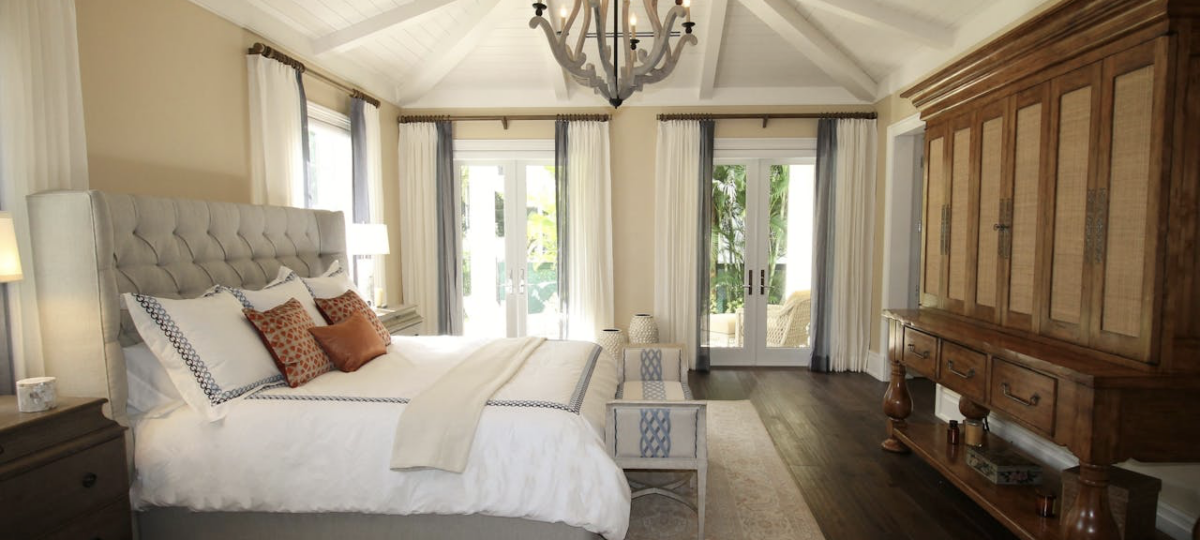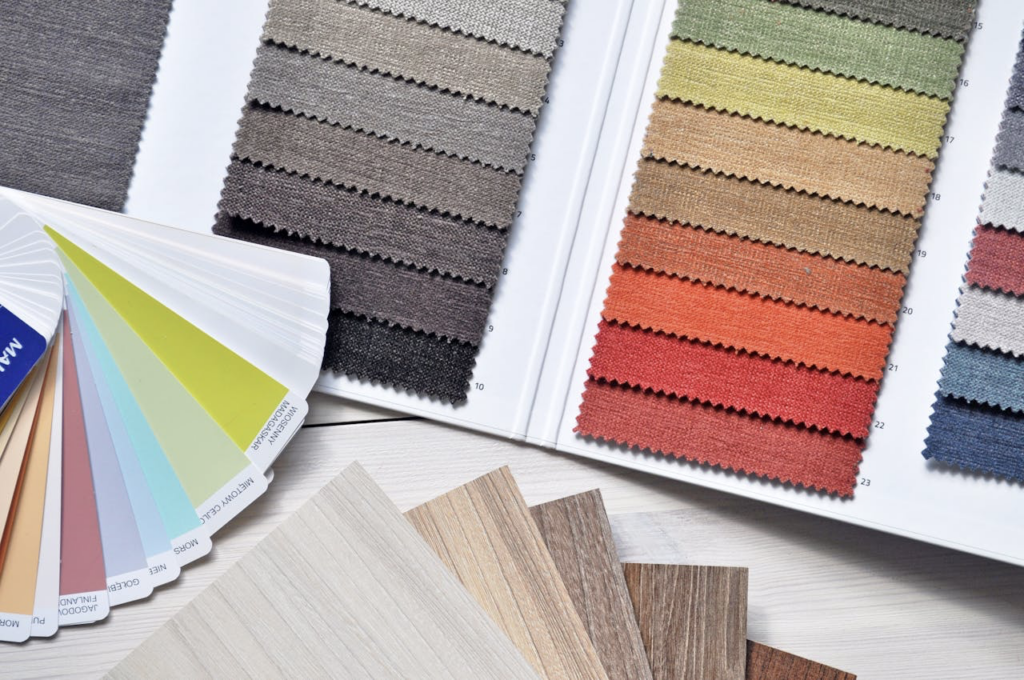Every purchase made online is encrypted with a high level of security you’ve come to expect. Your private information is never shared nor sold, so you can buy with confidence. You can also visit our store if you are in the St. Louis area.

Estimated reading time: 6 minutes
Amidst the chaos of moving to a new home, it’s easy to overlook how your new environment might impact your well-being. One effective way to enhance relaxation and sleep post-relocation is by carefully selecting the colors for your new living space. Color psychology suggests that certain hues can significantly affect our mood, stress levels, and overall quality of sleep.
Table of Contents
Move With Professional Help
Before you can start the fun process of decorating your new home, you need to go through the less-than-simple relocation part. If you are making an interstate move, it surely complicates the logistics even more. You might be moving to Missouri from far away—like Florida—in which case it’s wise to reach out to interstate movers who can handle the heavy lifting, allowing you to focus on setting up your new home with the perfect colors to enhance relaxation post-relocation.
Related Links
Once you are settled in, you can start focusing on adjusting to a new environment. The climate, surroundings, and even the style of homes can differ significantly. This transition makes it even more important to create a relaxing and welcoming space in your new home.
The Impact Of Color On Mood And Sleep
Colors have a profound impact on our emotions and behaviors. Understanding the basics of color psychology can help you make informed decisions when decorating your new home. Here’s a brief overview of how different colors can affect your mood and sleep:
- Blue is known for its calming effects and is a popular choice for bedrooms. It can reduce anxiety and promote a sense of peace, making it easier to fall asleep.
- Green is associated with nature and has a soothing and restful quality. It can help reduce stress and create a balanced atmosphere.
- Yellow should be used sparingly in bedrooms as it can be too stimulating for sleep, although cheerful and uplifting.
- Red can increase energy and passion but might be too intense for a relaxing environment.
- Purple is often linked with luxury and creativity and can be calming in lighter shades but may be too stimulating in darker tones.
Best Colors For The Bedroom
Choosing the right color for your bedroom will enhance relaxation and sleep post-relocation. Here are some of the best colors to consider.
Soft Blues
Soft blues are ideal for creating a serene bedroom environment. Shades like sky blue, powder blue, and light teal can evoke calmness and stability. These colors can help lower blood pressure and heart rate, making it easier for you to relax and fall asleep.
Gentle Greens
Gentle greens, such as sage, mint, and seafoam, can bring a touch of nature into your bedroom. These hues are known for their restorative and refreshing qualities. Green can create a harmonious atmosphere, helping to reduce stress and improve sleep quality.
Neutral Tones
Neutral tones like beige, ivory, and light gray can provide a clean and simple backdrop that can make your bedroom feel more spacious and uncluttered. They are versatile and can be easily paired with other calming accents.
Soft Lavenders
Soft lavender shades can add a touch of elegance to your bedroom while promoting relaxation. Lighter purples, such as lilac and periwinkle, can have a calming effect without being overpowering. These colors are perfect for creating a peaceful and dreamy atmosphere.
Creating A Relaxing Living Room
While the bedroom is the primary focus for sleep, your living room should also be a place where you can unwind and relax. Here are some color suggestions to enhance relaxation in your living room post-relocation.
Earthy Browns
Earthy browns like taupe and mocha can create a warm and inviting living room. These colors are grounding and can help you feel more connected to your space. Pairing browns with natural materials like wood and stone can enhance the relaxing effect.
Soft Grays
Soft grays are versatile and can create a sophisticated and calming living room. Shades like dove gray and silver can provide a neutral backdrop that allows you to incorporate other relaxing colors through furniture and decor. Gray is a great choice for those who prefer a modern and minimalist aesthetic.
Muted Blues And Greens
Muted blues and greens, similar to those recommended for the bedroom, can also be used in the living room. These colors can create a cohesive and tranquil atmosphere throughout your home. Consider using these hues for larger pieces of furniture, such as sofas and armchairs, to create a unified and calming space.
Tips For Choosing The Right Paint
When selecting paint colors to enhance relaxation and sleep post-relocation, keep these tips in mind:
- Before committing to a color, test a few samples on your walls. Colors can look different under various lighting conditions, so it’s important to see how they appear in your space.
- The type and amount of lighting in a room can affect how colors look. Natural light can make colors appear brighter, while artificial lighting can create different hues. Choose colors that work well with your room’s lighting.
- If you love bold colors, consider using them as accents rather than main wall colors. This can prevent the space from feeling overwhelming while still incorporating your favorite hues.
- Aim for a consistent color scheme throughout your home to create a harmonious flow. This doesn’t mean every room needs to be the same color, but having a cohesive palette can enhance the overall relaxing atmosphere.
Incorporating Color Through Decor
Paint isn’t the only way to introduce relaxing colors into your new home. Consider these additional decor elements.
Bedding And Curtains
Choose soft and soothing colors for your bedding and curtains. These items cover a large area and can significantly impact the room’s overall feel. Opt for materials that are comfortable and promote relaxation, such as cotton or linen.
Furniture
Select furniture in calming hues to create a cohesive look. Sofas, chairs, and even rugs in neutral or pastel colors can contribute to a peaceful environment. Avoid overly bright or contrasting colors that might create a sense of chaos.
Accessories
Decorate with accessories in your chosen color palette. Throw pillows, blankets, and artwork can add pops of color without overwhelming the space. These items are also easy to change if you decide to update your color scheme in the future.
Enhance Relaxation And Sleep Post-Relocation
Enhance relaxation and sleep post-relocation to settle into your new home comfortably. By carefully choosing colors that promote calmness and tranquility, you can create a soothing environment that helps you unwind and enjoy restful nights. Whether you opt for soft blues, gentle greens, or neutral tones, the right hues can significantly affect how you feel in your new space. Take the time to explore different colors and find the perfect palette that enhances your well-being.
Contact STL Beds Now
You can also contact us by filling out the form below. Make sure to fill in as many fields as possible so we can respond to you with the most accurate information!




